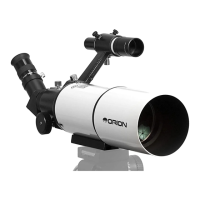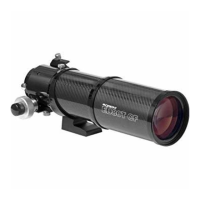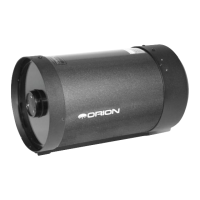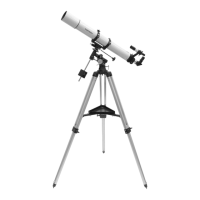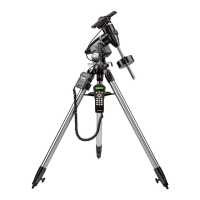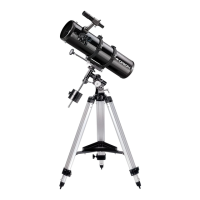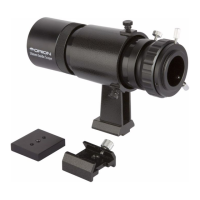16
Star-Testing the Telescope
When it is dark, point the telescope at a bright star and accurately center it in the
eyepiece’s eld of view. Slowly de-focus the image with the focusing knob. If the
telescope is correctly collimated, the expanding disk should be a perfect circle
(Figure 9). If the image is unsymmetrical, the scope is out of collimation. The
dark shadow cast by the secondary mirror should appear in the very center of the
out-of-focus circle, like the hole in a donut. If the “hole” appears off-center, the
telescope is out of collimation. If you try the star test and the bright star you have
selected is not accurately centered in the eyepiece, the optics will always appear
out of collimation, even though they may be perfectly aligned. It is critical to keep
the star centered, so over time you may need to make slight corrections to the
telescope’s position in order to keep the star in the center of the eld of view. A
good star to point at for a star test is Polaris, the North Star, because its position
does not move signicantly over time.
7. Useful acessories
•OrionMoonFilter – A 1.25" Moon lter will cut down the strong glare of sunlight
reected from the Moon, making Moon viewing more comfortable and revealing
more surface detail. The lter threads into the bottom of the Kellner eyepieces that
came with your telescope.
•OrionStarTargetPlanisphere – A nifty “star wheel” that shows what stars and
constellations are visible in the sky at any time of any night. Just set the date and
Figure 8. Adjust the tilt of the secondary
mirror with the three Philips screws surrounding
the center screw.
Alignment
setscrews
